Plastic weighing as much as the Eiffel Tower pollutes Great Lakes yearly. High-tech helps.
MANITOWOC, Wisconsin – Stoves, washing machines and scrap material. These are a few of the things Evan Rinke has pulled out of rivers that flow into Lake Michigan.
This is Rinke's first summer operating a marine debris boat, which is used to pick up trash along Lake Michigan’s shoreline. Yet nothing surprises him.
Not even the picnic table he pulled out of the Manitowoc Harbor earlier this month.
What worries Rinke more, though, is the amount of plastic he sees every day.
Every year 22 million pounds of plastic winds up in the Great Lakes – about the same weight as the Eiffel Tower.
Just over half goes into Lake Michigan.
Lake Michigan's beaches may look clean while walking on the sand, but people don’t realize how much plastic litter is only a few inches beneath the surface, said Gregory Kleinheinz, director of the Environmental Research and Innovation Center at the University of Wisconsin-Oshkosh.
Lake Michigan likely has more plastic than the other Great Lakes because of its size as well as the number of large cities nearby and large tributaries that flow into it, Kleinheinz said.
But cutting-edge technology may provide a path forward.
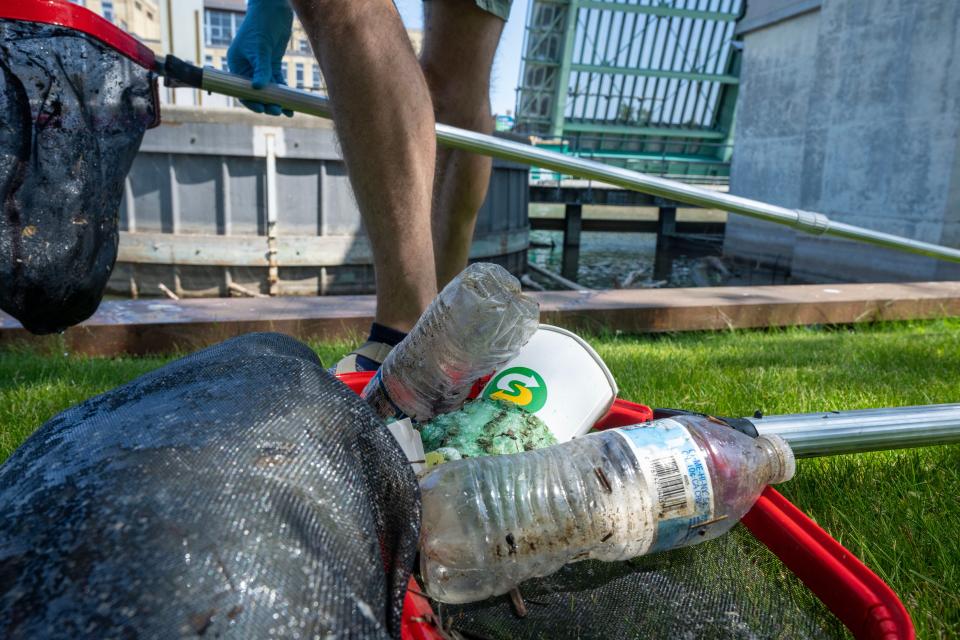
A suite of technologies – including an aquatic robot vacuum that sucks up trash – is being used this summer to clean up plastic pollution before it can get into the lake.
Wisconsin’s lakeshore now has the highest concentration of plastic pollution-collecting technology in the Great Lakes region.
And while individual devices won’t fix the problem, Kleinheinz said, it is a start in helping communities tackle the Great Lakes' staggering plastic pollution.
Here's how robots and other technology are being used to clean up plastic pollution in Lake Michigan.
A boat that travels Lake Michigan tributaries
The marine debris boat is a two-hulled catamaran that goes out four days a week during the swimming season to pick up trash in Sturgeon Bay and the Fox, Ahnapee, Kewaunee and Manitowoc rivers.
The boat is owned by UW-Oshkosh and is operated by students, like Rinke, from across the UW System. The boat was purchased with funding from the U.S. Environmental Protection Agency.
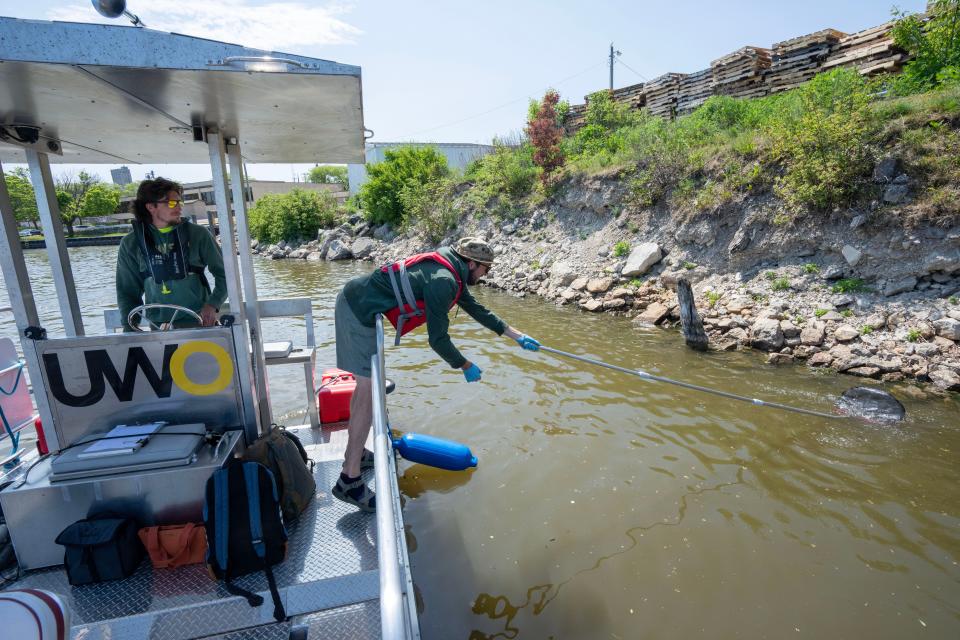
A remote-controlled beach groomer
The BeBot is an electric, remote-controlled robot that combs through the sand along beaches, collecting things like plastic litter, bottle caps, cans, cigarettes and food wrappers.
The robot vacuum can run for up to two hours, sifting through sand up to 4 inches deep and capturing anything larger than 4 millimeters.
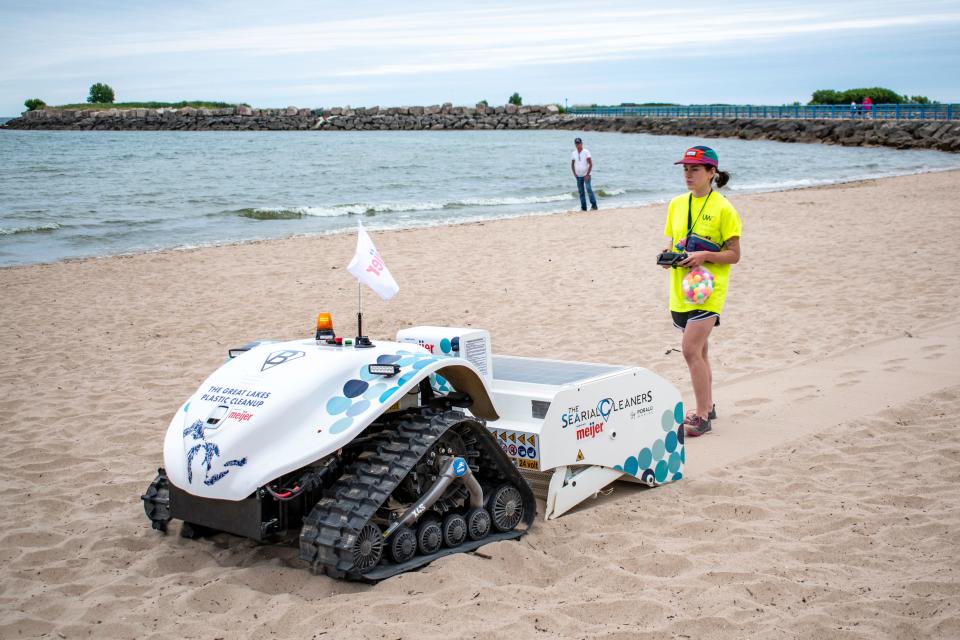
On July 5, after the holiday weekend, Amanda Hoehn, one of the UW-Oshkosh students who operate the BeBot, picked up more than 3.5 pounds of trash, including 220 cigarette butts, at the Blue Rail Park beach in Manitowoc.
On a normal weekday, she usually collects up to 1.5 pounds of litter.
This may not seem like a lot, Hoehn said, but considering how lightweight these objects are − bottle caps, food wrappers, plastic fragments − it's actually very large.
One perk of the BeBot: It’s an attention grabber.
When beachgoers see it they ask questions, making it a great tool to educate people about plastic pollution in the Great Lakes.
An aquatic robot vacuum
The Pixie Drone is like a robot vacuum, but for water.
The device, which skims the water and picks up floating trash, can gather up to 200 pounds of trash before it’s full.
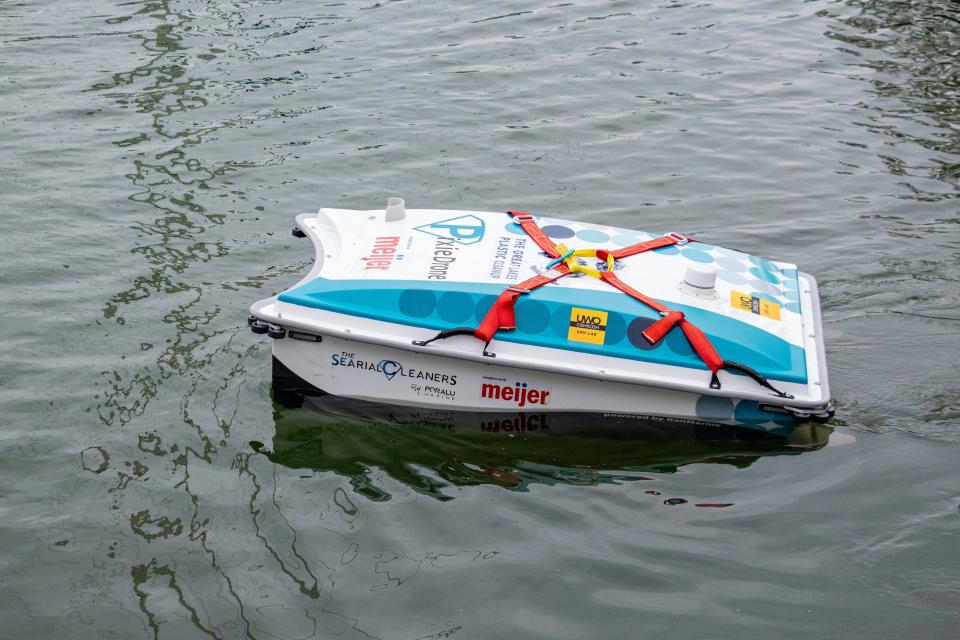
The Pixie Drone can work on its own or with a remote control, and can access water that is difficult or dangerous. It can also record information on water quality, like temperature, pH, dissolved oxygen and turbidity.
Meijer has deployed BeBots and Pixie Drones on 18 beaches across Wisconsin, Michigan and Ohio. In Wisconsin, they are currently operating in beaches near Manitowoc and in Sturgeon Bay.
A trash skimmer for marinas, yacht clubs
The Seabin is a trash skimmer designed for calmer waters, like marinas, yacht clubs and ports.
It works like a floating garbage bin that pumps water into the device, which allows it to pick up floating debris as well as microplastics.
The technology also has pads that absorb oils.
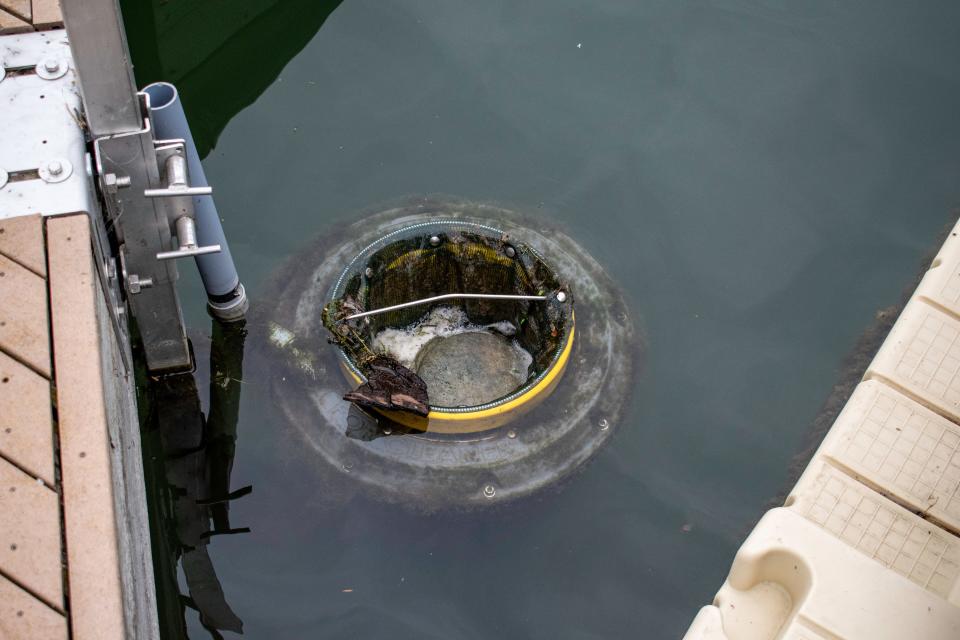
Currently eight Seabins are deployed across Wisconsin and New York.
Wisconsin boaters can find them in marinas, like Egg Harbor Marina, Manitowoc Marina and South Bay Marina in Green Bay.
Collecting plastic in stormwater
Two technologies – LittaTrap and Gutter Bin – are used to capture plastic before it enters stormwater systems.
While cities like Milwaukee have a combined sewer system that collects stormwater runoff and treats it before it heads into Lake Michigan, that isn’t the case for other communities along the lake.
So, heavy rain events can cause an influx of plastic that head straight into the lake, Kleinheinz said.
The Gutter Bin is a stormwater filtration system that sits on top of a storm drain, while the LittaTrap is a catch basin that sits inside. Both help to collect litter in urban areas.
Meijer recently installed a Gutter Bin in Kenosha about a month ago, according to Kleinheinz.
Part of an effort to clean up the Great Lakes
The plastic-collecting technology is a part of the Great Lakes Plastic Cleanup, an effort led by the Council for the Great Lakes Region to clean up plastic pollution in the lakes.
Many of these technologies were already being used in the Canadian portions of the lakes. But funding from Meijer and U.S. government agencies, like the EPA and the National Oceanic and Atmospheric Administration, helped deploy these technologies in the U.S. last year.
For Subscribers: The Mississippi River's floodplain forests are dying. The race is on to bring them back.
The Council for the Great Lakes Region partnered with universities, cities, marinas and county parks that then operate these technologies throughout the summer. In Wisconsin, examples include: the UW-Oshkosh, City of Manitowoc and Manitowoc Marina.
Around 50 students from the UW System are out all summer addressing plastic pollution in Lake Michigan, Kleinheinz said.
The plastic pollution and other litter doesn’t just get recycled, the council and their partners are taking note of what kind of plastic pollution is out there so they can get to the root of the problem.
For subscribers: From trash-strewn beach to artwork: How artists are raising awareness of plastic waste
Caitlin Looby is a Report for America corps member who writes about the environment and the Great Lakes. Reach her at clooby@gannett.com.
Please consider supporting journalism that informs our democracy with a tax-deductible gift to this reporting effort at jsonline.com/RFA or by check made out to The GroundTruth Project with subject line Report for America Milwaukee Journal Sentinel Campaign. Address: The GroundTruth Project, Lockbox Services, 9450 SW Gemini Dr, PMB 46837, Beaverton, Oregon 97008-7105.
This article originally appeared on Milwaukee Journal Sentinel: Robots, other technology, clean up Lake Michigan beaches. Here's how.

